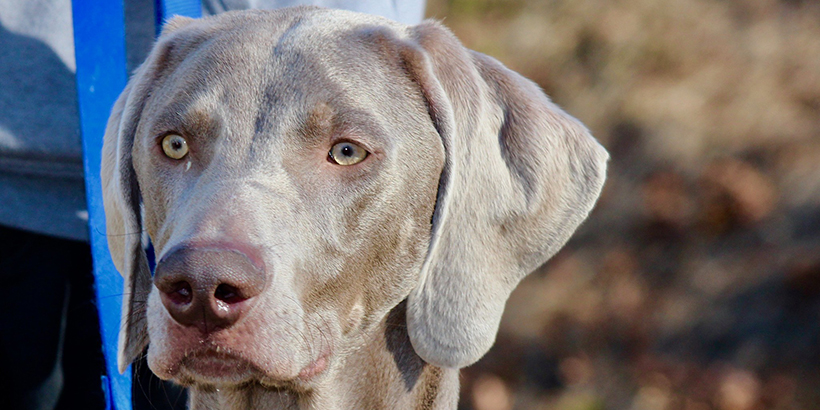
Dogs find the world an exciting place where there’s loads of things to do and explore, and this can mean they don’t pay attention to us when we’re trying to get their attention. It’s also possible your pup has learned to ignore their name because we often (unintentionally) pair it with a verbal correction (“Bruce, no!” or “Bruce, off!”). The Name Game helps teach your dog that responding to you is just as rewarding as focusing on the environment. By playing the Name Game frequently, your dog will learn to respond to you, even when there’s other really exciting stuff happening around them. This game works well for dogs of all ages!
What’s the Name Game?
The game is simple; You say your dog’s name in a happy voice and, when they look at you, you reward them. Easy!
The Rules:
- Set yourself and your pet up for success by following these simple rules.
- Start in a quiet space. Only go to the next level once you’ve mastered the level you’re on.
- Use “high value” rewards. We suggest treats, but the treat needs to be really exciting for your dog. Tiny pieces of cheese, nitrate-free hotdog, liverwurst, or soft treats are ideal. The more enticing it is to your dog, the better.
- Be patient and don’t force it. You want this to be a positive experience and exchange.
How to Play:
Level 1: Gather small bits of your dog’s favorite treat. Start in a quiet room, with your dog close to you, and no distractions. Say your dog’s name in a happy voice and when they look at you say “yes” and give them a treat. Play until the treats are gone. Once your pup is consistently responding to you right away, you can move on to Level 2.
Level 2: Repeat the same steps as Level 1 but in different environments with slowly increasing distractions. Maybe you have a few toys around, or more than one family member present. When you notice the distractions are not interfering with your dog responding to you, you can move on to the next level.
Level 3: It’s now time to begin using your dog’s name when they are not close to you. Start the exercise across the room, or in an adjacent room where you can still see them. Say their name and when they begin to turn their head, say “yes” and toss a treat. Stay at this level until your dog is reliably responding to you, then try Level 4.
Level 4: Try this exercise in different rooms where your dog cannot see you, outside on a long lead, and during walks when your dog will be more distracted.
Remember: To make yourself more interesting than distractions, you may need to increase the “value” of the treats you are using. Training is a bonding experience for you and your pet. Have fun!
